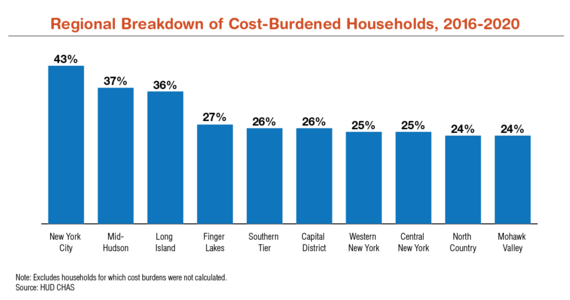Adams Administration Files Lawsuit to Hold TikTok, Instagram, Facebook, Snapchat, and YouTube Accountable for Their Platforms’ Damaging Influence on Mental Health of Children
City Issues Action Plan to Address Harms Caused by Social Media
New York City Mayor Eric Adams, New York City Corporation Counsel Sylvia O. Hinds Radix, New York City Department of Health and Mental Hygiene (DOHMH) Commissioner Dr. Ashwin Vasan, NYC Health + Hospitals (NYC H+H) President Dr. Michell Katz, and New York City Department of Education (DOE) Chancellor David C. Banks today announced the filing of a lawsuit to hold five social media platforms — TikTok, Instagram, Facebook, Snapchat, and YouTube — accountable for fueling the nationwide youth mental health crisis. The city is joining hundreds of school districts from across the country in filing litigation seeking to force tech giants to change their behavior and to recover the costs of addressing this public health threat. The city spends more than $100 million on youth mental health programs and services each year. To help address this ongoing crisis and the harm caused by these platforms, Mayor Adams also today released a social media action plan, “New York City’s Role in the National Crisis of Social Media and Youth Mental Health: Framework for Action, to hold social media companies accountable, provide education and support to young people and families, and study the long-term impacts of social media on youth.
Today’s announcement builds on the Health Commissioner’s Advisory that DOHMH Commissioner Dr. Vasan issued last month, identifying unfettered access to and use of social media as a public health hazard, just as past U.S. surgeons general have done with tobacco and firearms. The advisory provides recommendations to parents and caregivers, health care providers, educators, and policymakers on actions that can be taken to protect children, including the recommendation to delay social media use until the age of 14.
“Over the past decade, we have seen just how addictive and overwhelming the online world can be, exposing our children to a non-stop stream of harmful content and fueling our national youth mental health crisis,” said Mayor Adams. “Our city is built on innovation and technology, but many social media platforms end up endangering our children's mental health, promoting addiction, and encouraging unsafe behavior. Today, we’re taking bold action on behalf of millions of New Yorkers to hold these companies accountable for their role in this crisis, and we're building on our work to address this public health hazard. This lawsuit and action plan are part of a larger reckoning that will shape the lives of our young people, our city, and our society for years to come.”
“Social media companies like TikTok, Snapchat, YouTube, and Meta are fueling a national youth mental health crisis,” said Corporation Counsel Hinds-Radix. “These companies have chosen profit over the wellbeing of children by intentionally designing their platforms with manipulative and addictive features and using harmful algorithms targeted to young people. Social media companies should be held accountable for this misconduct and for the harms they cause to our children, schools, and entire communities.”
“Online networks are powerful tools to connect with friends, family, classmates, and so much more,” said Deputy Mayor for Health and Human Services Anne Williams-Isom. “However, social media can also be a place for unhealthy comparisons to others, a platform for bullying, and lead to negative mental health implications for our children. Building on our social media summit in 2023, we are now releasing a social media action plan to support young people and families as they navigate social media. We are also taking legal and regulatory action to hold social media companies accountable for their actions and urging them to help build healthier environments for their users, particularly for children and young people. This administration is committed to protecting and promoting the health and well-being of every child and young person in every space whether in everyday life or online.”
“This is about protecting our young people,” said City Hall Chief Counsel Lisa Zornberg. “The U.S. surgeon general was right to say this is ‘just not a fair fight.’ The best product developers in the world have designed addictive feeds and features to maximize the amount of time young people spend on the platform — leaving parents, young people, teachers, and emergency rooms to deal with the harmful consequences. Real relief is needed and real change from the social media companies is long past due.”
“Social media is a toxin in our digital environment, like lead, air pollution, and nicotine are in our physical one,” said DOHMH Commissioner Dr. Vasan. “Environmental toxins require regulation, control, and mitigation, and public health must build on its environmental health legacy to address this modern threat. New York City is employing a wide array of tools to fight back, including education and awareness, research, and regulation, and this lawsuit is the latest example of our city’s commitment to ensure young people are safe from the impacts of social media on mental health and wellbeing. The laissez-faire days for tech giants must end and expecting them to self-regulate is naïve. As a parent and as the city’s doctor, to protect the public’s health, we will not remain idle while these platforms damage the health of our children.”
“Social media has opened a window to the world for so many, however major social media companies have abused their power, resulting in serious consequences for the mental health of our students,” said DOE Chancellor Banks. “It is clear these companies have failed our young people, and I’m proud to be standing with my city agency partners to call for accountability, and for our nation’s policymakers to take action to protect our kids.”
“Social media has become a central part of many of our lives, especially among children and adolescents,” said NYC H+H Chief of Behavioral Health and Co-Deputy Chief Medical Officer Omar Fattal, MD, MPH. “We must maximize our efforts to support the mental health needs of children and adolescents by providing families with tools and resources that foster healthy development. This includes robustly addressing the negative impact of social media on the mental health of children and adolescents. We join the mayor and DOHMH in encouraging all young people and their families to consider their use of social media and how it may be negatively affecting them.”
“Social media can be used as a tool for information-sharing and building community. But, as a mental health clinician, I have also witnessed the profound negative impacts it continues to have on the mental health of many of our young people,” said Mayor’s Office of Community Mental Health Executive Director Eva Wong. “Often times, social media exposes our children to cyberbullying, body image issues, online predators, privacy concerns, and increasing risk of depression, anxiety, feelings of isolation, and even suicide. As a mother, I’m deeply concerned about the enduring negative effect social media has on shaping youth culture. And today, as a city, we are saying it is not sufficient to merely caution young people about the dangers of social media; we must also hold companies accountable for creating and profiting from an environmental toxin that harms our children and young people.”
Today’s lawsuit — filed in California Superior Court by the City of New York, the DOE (the largest school district in the nation), and NYC H+H (the country’s largest public hospital system) — seeks to hold the companies operating TikTok, Instagram, Facebook, Snapchat, and YouTube accountable for their role creating the youth mental health crisis in New York City. The lawsuit alleges that companies intentionally designed their platforms to purposefully manipulate and addict children and teens to social media applications with features that include:
- Using algorithms to generate feeds that keep users on the platforms longer and encourage compulsive use.
- Using mechanics akin to gambling in the design of apps, which allow for anticipation and craving for “likes” and “hearts,” and also provides continuous, personalized streams of content and advertisements.
- Manipulating users through reciprocity — a social force, especially powerful among teenagers, that describes how people feel compelled to respond to one positive action with another positive action. These platforms take advantage of reciprocity by, for example, automatically telling the sender when their message was seen or sending notifications when a message was delivered, encouraging teens to return to the platform again and again and perpetuating online engagement and immediate responses.
The complaint specifically states the companies’ intentional conduct and negligence has been a substantial factor in fueling a youth mental health crisis, which constitutes a public nuisance affecting schools, public hospitals, and communities citywide, and, as a result, that the city has had to expend significant resources to address. In New York City, over 38 percent of high school students reported feeling so sad or hopeless during the past year that they stopped engaging in their usual activities. The rate of hopelessness among New York City high schoolers in 2021 was almost 50 percent higher for Latino and Black students than for white students, and almost 70 percent higher for female students than for male students. Today, over one-third of 13- to 17-year-old children nationwide report using social media “almost constantly” and admit this is “too much.” Yet, more than half of these kids report that they would struggle to cut back on their social media use. Likewise, in 2021, 77 percent of New York City high school students reported spending an average of three or more hours per school day in front of screens — not including time spent on schoolwork.
“Our children are facing a mental health crisis fueled by social media companies’ disregard for their safety and wellbeing,” said New York Attorney General Letitia James. “We owe it to our kids to tackle the damaging effects of social media, and I applaud Mayor Adams for taking this important action today to hold these companies accountable. This lawsuit builds on the important work we’ve done to advance legislation to rein in the most addictive and dangerous features on social media and the legal action we’ve taken to stop them. It is unacceptable that big tech companies can profit off the harm they are doing to young people, and I want to thank Mayor Adams for joining our effort to protect the next generation of New Yorkers.”
The Adams administration has taken repeated action to tackle the youth mental health crisis. Last year, Mayor Adams announced that the city launched TeenSpace, a free tele-mental health service available to all New York City teenagers, between the ages of 13 and 17 years old, that allows teenagers to connect with a licensed therapist through phone, video, and text. In the three months of operation, TeenSpace has served over 2,000 youth across the five boroughs.
In addition to the city’s work supporting New York City youth in crisis through DOHMH and NYC H+H programming, DOE has devoted significant resources to combatting students’ addiction to social media and the many resulting harms, including by responding to cyberbullying occurring outside of class, providing counseling for anxiety and depression, and developing curricula about the effects of social media and how to stay safe online.
In March 2023, the Adams administration launched “Care, Community, Action: A Mental Health Plan for New York City,” a mental health plan focused on improving the mental health of children and young people. Following the plan’s release, the city convened more than 150 advocates, researchers, technologists, mental health providers, community-based organizations, and caregivers in partnership with New York City youth to lay out potential pathways for action to protect the mental health of children and youth. The convening provided the recommendations that built the foundation for today’s social media action plan, outlining New York City’s commitment to protect young New Yorkers against this threat and empower them to use these technologies in ways that are less harmful. As part of today’s plan, the city will also identify where local data can support existing research on this topic and opportunities to survey youth on their experiences with social media, why they use social media, their current social media habits, and social media’s impacts on their mental health. Finally, the city will advocate with state and federal policymakers to put in place laws that require social media companies to ensure that their platforms are safe for youth mental health.




